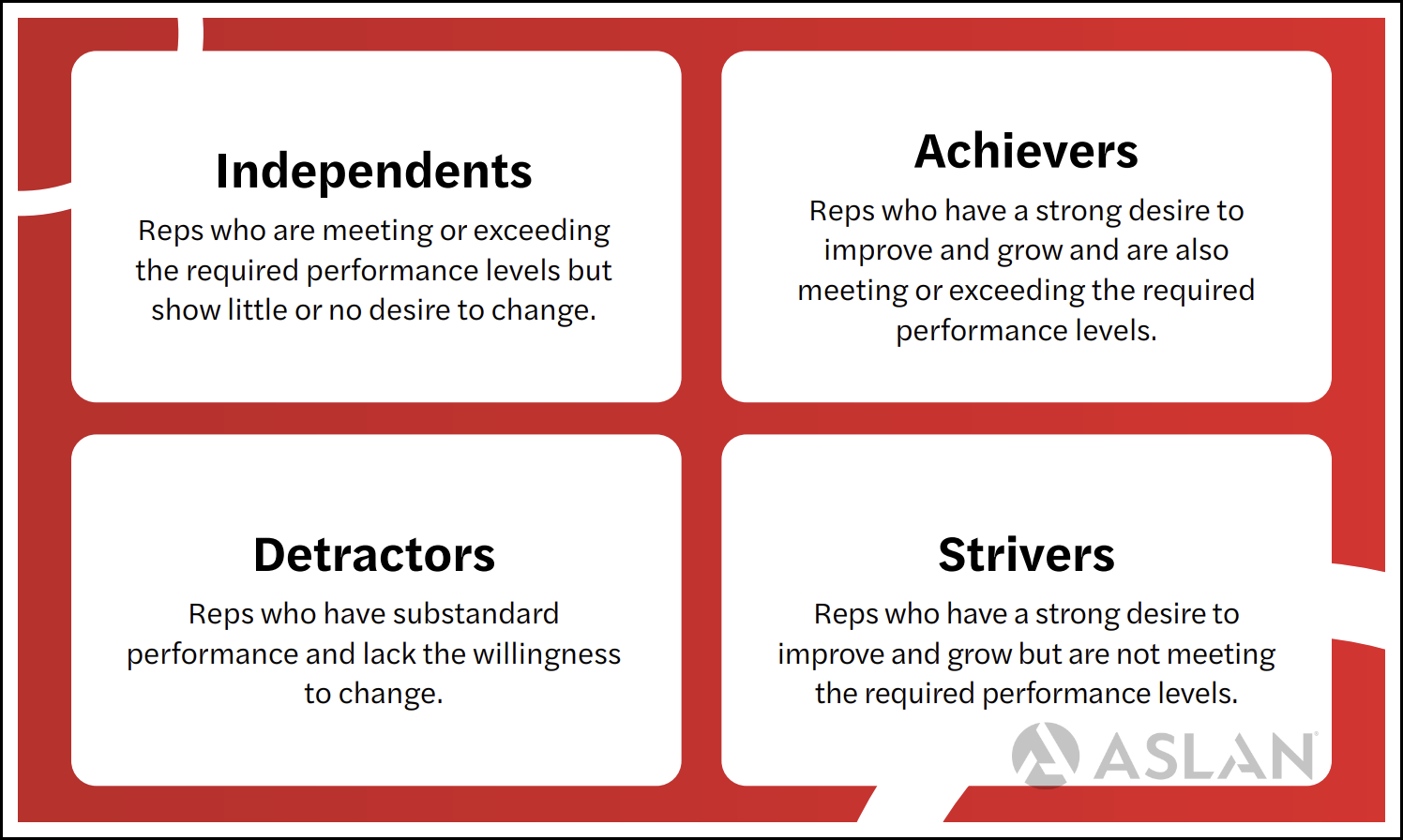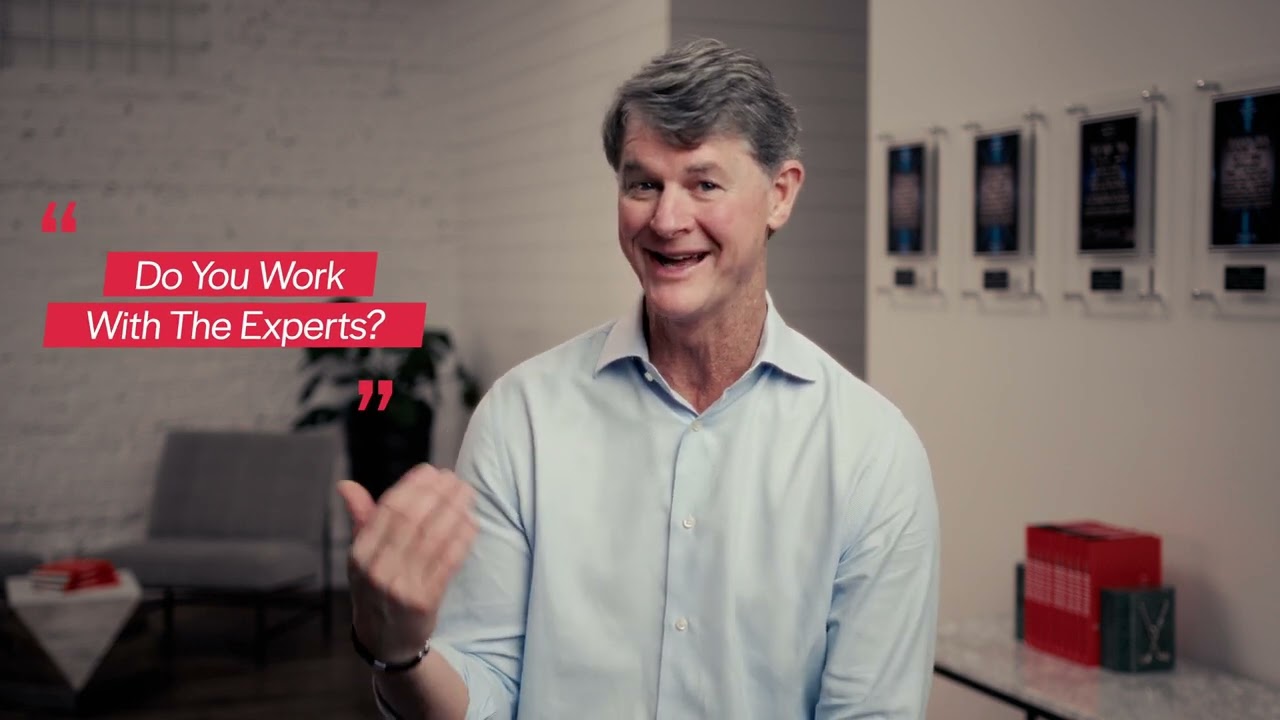The #1 Driver to Sales Performance Part III: Strategic Front-line Sales Management
By ASLAN Training
April 30, 2025
6 min read
While you provide leadership and strategy, your front-line sales managers are in the thick of it every day—balancing targets, firefighting, and trying to help every rep succeed. But they're also stretched thin. Does your team really have time for coaching conversations that don’t lead to growth?
The truth is, coaching every rep—or coaching everyone the same way—doesn’t work. Managers need to prioritize their efforts more strategically, so that the coaching fits the team.
Want to catch up on the rest of the series? We’ve previously covered why leadership is key to sales success, and how you can set your management team up to win. Now, we’ll dive even deeper on what that actually looks like in practice.
Why Having Sales Management Coach Every Rep The Same Way Is a Mistake
It’s natural for your front-line managers to want to help everyone on the team. But doing so, they’ll run themselves ragged. Instead, just like a farmer knows not every patch of ground is ready for planting, great managers know that not every rep is ready—or willing—to grow.
When your sales management’s coaching efforts are spread evenly, they dilute impact and risk burning out. Instead of burning precious resources on reps who aren’t open to it, encourage your team to lead by this mantra:
Desire determines development.
In other words, before you coach, make sure you know who’s truly willing to put in the work.
How to Decide Who Your Sales Managers Coach (And How They Do It)
So, how do you know where to invest coaching time?
Picture your team on two axes:
- Desire: Are they willing to change and grow?
- Results: Are they currently meeting or exceeding their targets?
This simple filter is the heart of ASLAN’s Quad Coaching framework:

Mapping out your team by desire and results, will tell you exactly where coaching will pay off—so your management team can deliver better results without spinning their wheels.
Here’s how it works:
Strivers: Your Biggest Opportunity—If You Coach the Right Way
Strivers are hungry to improve but haven’t yet hit their goals. They’re open, willing to try new things, and will do what it takes to make the team—but they need your help to close the gap.
To coach Strivers:
- Diagnose the gap: Use objective outcomes to identify the most important skill or behavior holding them back (“Did the customer agree to next steps?”).
- Get aligned: Ask if they see the same gap and connect it to their personal goals, and work with them to create a focused development plan.
- Set the cadence: Establish regular feedback and progress checks, and define what “done” looks like.
- Encourage progress: Reinforce effort, but emphasize that progress—not just activity—is what matters.
Make your Strivers a coaching priority, because they’re likely to be the biggest return on investment. When sales managers coach them with focus and alignment, they’ll see the biggest performance gains.
And remember, even with Strivers, receptivity is key. Start every conversation by making their goals the priority, removing pressure, and validating their perspective before offering solutions.
Achievers: Don’t Let Your Best Plateau
Achievers are your rock stars—already delivering results and always looking for the next challenge. They’re eager to grow, but if you don’t invest in their development, you risk losing them to boredom or burnout.
This group should be your second coaching priority, just behind Strivers.
To coach Achievers, encourage managers to:
- Collaborate on goals: Partner on stretch assignments or new challenges that excite them.
- Offer leadership: Provide opportunities for mentorship, special projects, or piloting new strategies.
- Ask and listen: Find out what support or resources they need to reach the next level.
- Recognize wins: Celebrate their achievements both publicly and privately.
If Achievers don’t see a path for growth, they may disengage or look elsewhere. Make sure they feel challenged and valued, or you risk losing your top talent.
Independents: Lead with Respect, Ignite Curiosity
Independents hit their numbers but resist changing their approach. They value autonomy and may not see the need for coaching—yet.
To lead Independents, managers should:
- Check in regularly: Show support and appreciation, not an intent to “fix” them.
- Spark curiosity: Ask questions about future goals or risks (“What would make you want to take the next step?”).
- Connect to goals: Identify a personal or professional aspiration that could inspire change.
- Invest in trust: Demonstrate that your support isn’t conditional on performance.
- Limit development time: Only invest more if their desire shifts.
You can’t force someone to want to grow. Instead, focus on the relationship and be ready to coach if their motivation changes. Sometimes, a rising tide (more Strivers and Achievers performing) will naturally raise the bar, prompting Independents to seek growth.
Detractors: Manage Expectations, Don’t Chase
While detractors are typically struggling, they often aren’t receptive to coaching. This is where managers often waste valuable time and emotional energy that could be spent more productively.
This group can be your team’s lowest coaching priority. Instead, focus on managing them:
- Set expectations: Clearly define non-negotiable performance standards and timelines.
- Communicate consequences: Be specific and direct about what happens if results aren’t achieved.
- Validate, don’t debate: Acknowledge their perspective, but don’t argue or chase.
- Shift responsibility: Make it clear coaching is available if and when their desire changes, but don’t engage in development until then.
- Minimize time: Focus on management, not coaching, until they demonstrate willingness.
Don’t let your team get stuck in a tug of war. Instead, managers can “drop the rope,” and free up time for those who are ready to grow. Sometimes, that’s what prompts a change. Shifting responsibility to the rep often reveals their true willingness to improve.
Coaching for Receptivity: The Three Ps in Action
Most resistance isn’t logical—it’s emotional. That's true whether you're talking about a rep getting coached, or a front-line sales manager changing their coaching strategy. So if you get pushback, it’s probably not about the argument; it’s about how they feel.
To break through, leaders should focus on the “Three Ps”:
- Priority: Make the rep’s goals the center of the conversation. People are motivated by what they want, not what you want.
- Pressure: Remove pressure. Don’t play tug-of-war—invite them to own the solution. Results are non-negotiable, but how they get there is up to them.
- Point of View: Validate their perspective before sharing your own. People won’t listen to your point of view until they feel you understand theirs.
When leaders guide their teams with empathy and curiosity, they can prepare the soil for real change. That’s how to move from resistance to receptivity—and from wasted effort to real growth.
Empower Sales Managers to Coach More Strategically
Sometimes the biggest shift isn’t working harder—it’s knowing exactly where to invest your team’s time and energy—and equipping your sales management team with the knowledge and tools to make that call every day.
If you want to put these ideas into action on your team, check out our Quad Coaching micro-workshop and learn how your sales managers can tailor their coaching to maximize impact and minimize friction on their teams.
Unlock Your Team's Full Sales Potential
Let's build your blueprint to elevate every team member to peak performance. Our proven approach turns average sellers into consistent top performers. Fill the form to schedule a consultation
Questions? Watch our CEO, Tom Stanfill, address our frequently asked questions below.




